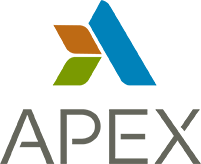Former Southwest Marine Facility Soil Removal Action
City of Los Angeles Harbor Department (Port of Los Angeles) • Los Angeles, CA
Solution Overview
Client:
City of Los Angeles Harbor Department (Port of Los Angeles)
Business Challenge:
- The former Southwest Marine facility at the Port of Los Angeles found soil impacted with polychlorinated biphenyls (PCBs), metals, and petroleum hydrocarbons
Solution:
- Prepared a Remedial Action Plan and a Remedial Design and Implementation Plan (RDIP), including cleanup goals and a health risk assessment
- Documented sampling locations in a geographic information system (GIS) database, providing a reference for residual contamination
Results:
- Removed lead- and copper-contaminated soil and PCB-containing soils with concentrations of more than 250 parts per million (ppm)
- Science-based approach minimized the amount of soil to be transported from the Site resulting in significant savings for the client
Challenge
Investigations at the former Southwest Marine facility at the Port of Los Angeles revealed that soil was impacted with PCBs, metals, and petroleum hydrocarbons.
Solution
Apex personnel prepared a Revised Soil and Groundwater Remedial Action Plan followed by a Final Revised RDIP. These documents, approved by the Department of Toxic Substances Control (DTSC) and the Environmental Protection Agency (EPA), included cleanup goals established from regulatory levels and a site-specific human health risk assessment. To prepare for a Port tenant who was planning to move to the Site and build a significant structure, Apex conducted oversight of the soil excavation, loading, manifest documentation, and transportation of soil by Harbor Department contractors.
Our team also documented sampling locations in a GIS database in coordination with the Harbor Department’s surveying crew. The resulting GIS-generated maps were used to memorialize the completion of the remedial efforts and provide a reference for the location of residual contamination which was not safely accessible during the implementation of the RDIP.
Results
Progress and confirmation soil sampling showed that PCB-containing soils with concentrations ranging to over 250 ppm and lead- and copper‑contaminated soil were removed during the course of the excavation and offsite disposal of over 10,000 tons of soil.
Apex established health-based cleanup goals for PCBs in soil to evaluate the effectiveness of the remedial efforts and implemented statistical methodologies, including the use of the EPA’s ProUCL approach, to demonstrate that the occasional data outlier (i.e., soil sample with residual PCB concentration above site cleanup goals) did not require the continuation of removal actions. This science-based approach minimized the amount of soil to be transported from the Site and resulted in savings of hundreds‑of‑thousands of dollars to the City of Los Angeles. At the end of the soil removal, Apex prepared a Removal Action Completion Report (RACR) containing 15 data tables, 28 figures, and 16 appendices for agency review. This voluminous report was approved without comments by both agencies.
Recently, Apex supported the Harbor Department by assisting in the development of post-environmental remediation documentation, including a Soil Management Plan and development of Land Use Controls. Apex was also tasked with developing, performing, and documenting the 5-year review process within the stated time parameters of the Site cleanup order.
